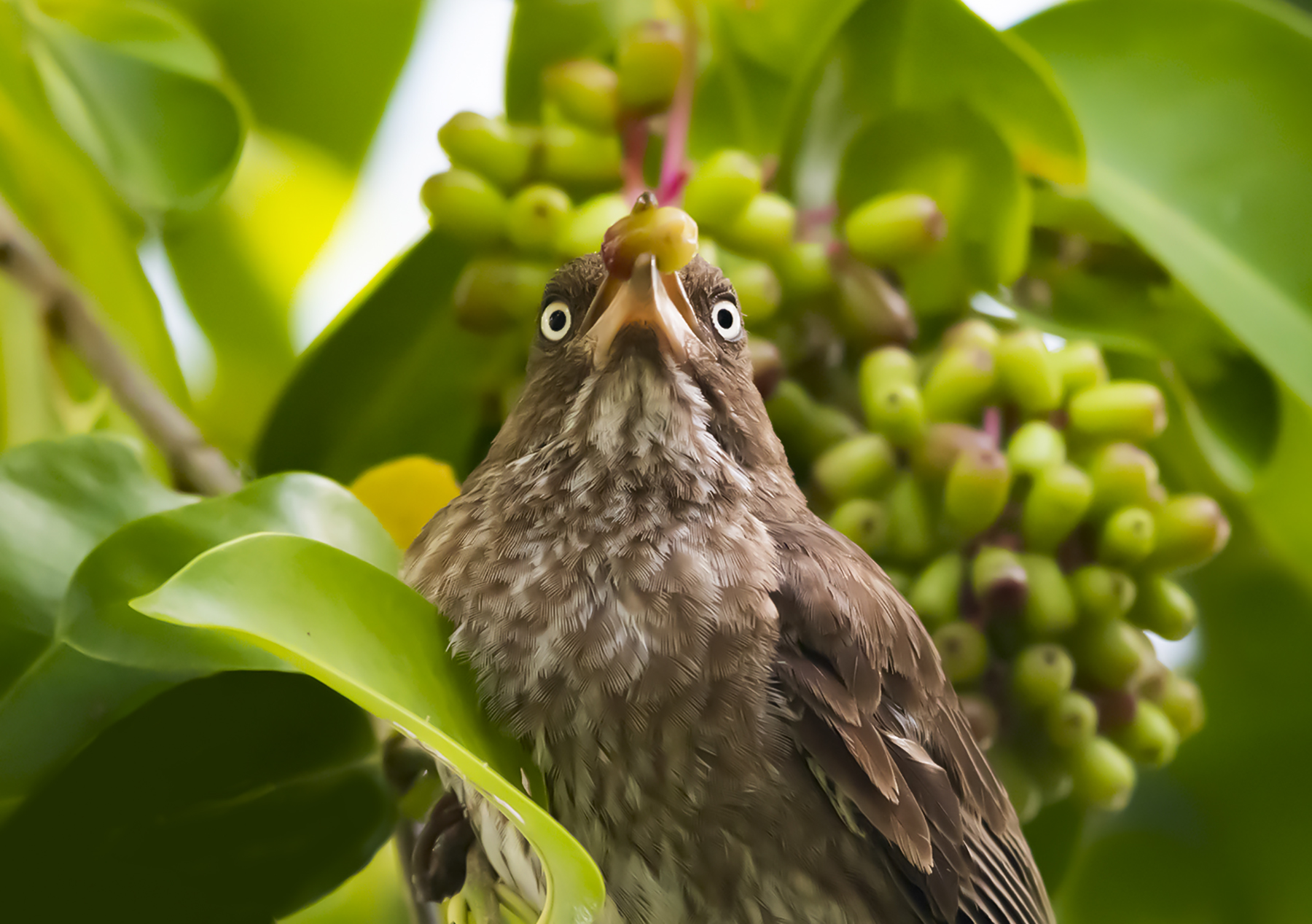
Although Black Mampoos are among the most common native trees in the Virgin Islands, they tend to blend into the wooded areas and are not usually noticeable until the summer, when they produce flowers and fruit. And even then, they are certainly not flamboyant. Nevertheless, they are attractive to a variety of local creatures.
These are relatively tall trees, 30 to 40 feet high, often with one straight trunk that doesn’t start branching until fairly high off the ground.
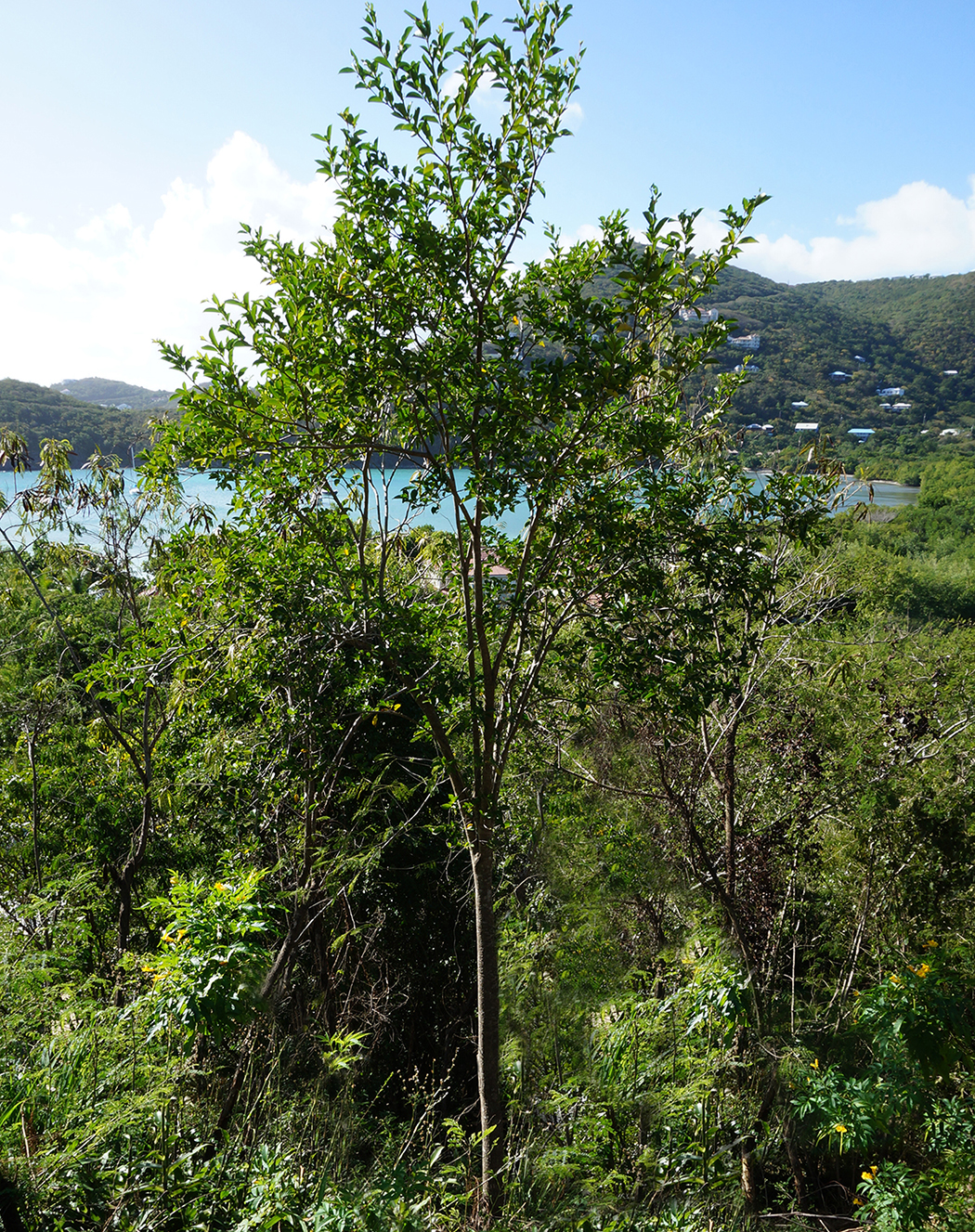
Their fragrant flowers start out as small buds at the ends of high branches.
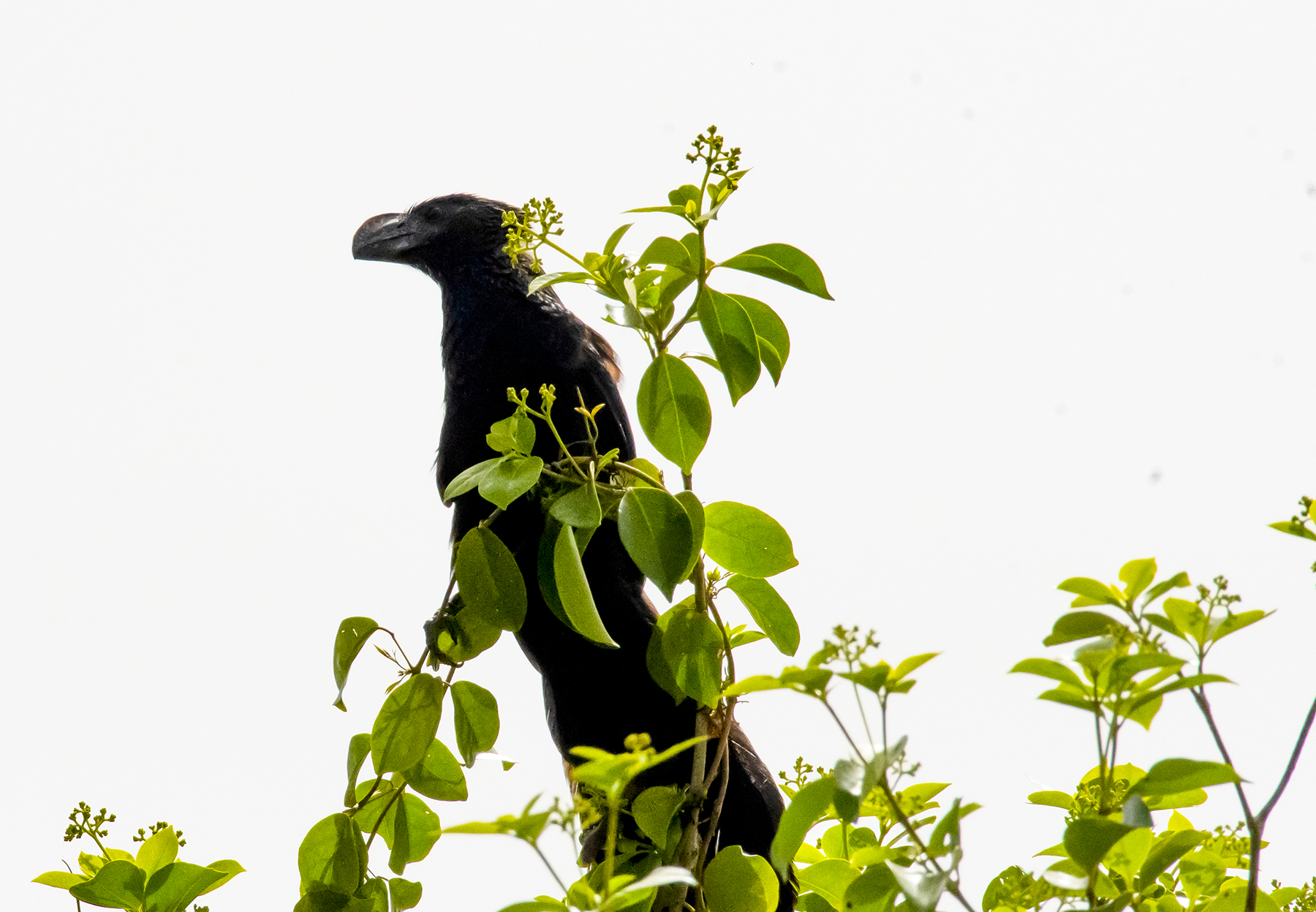
Soon the buds open up into tiny yellow cups with white, wispy stamens sticking out. The flowers are not bright and showy, but their smell seems to be attractive to a variety of insects.
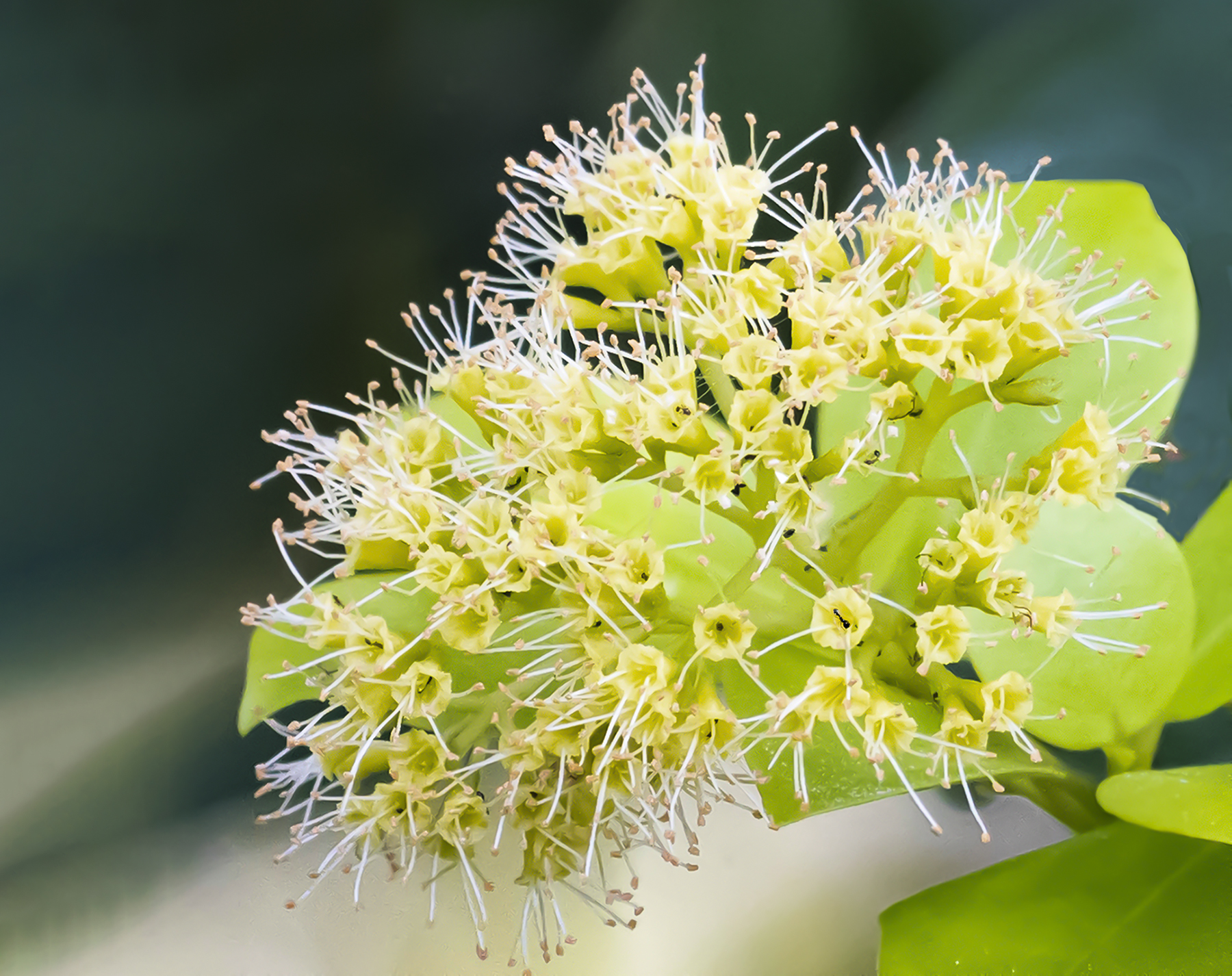
When the fruits first come out, they are light green. Then after a while they start to turn reddish purple.
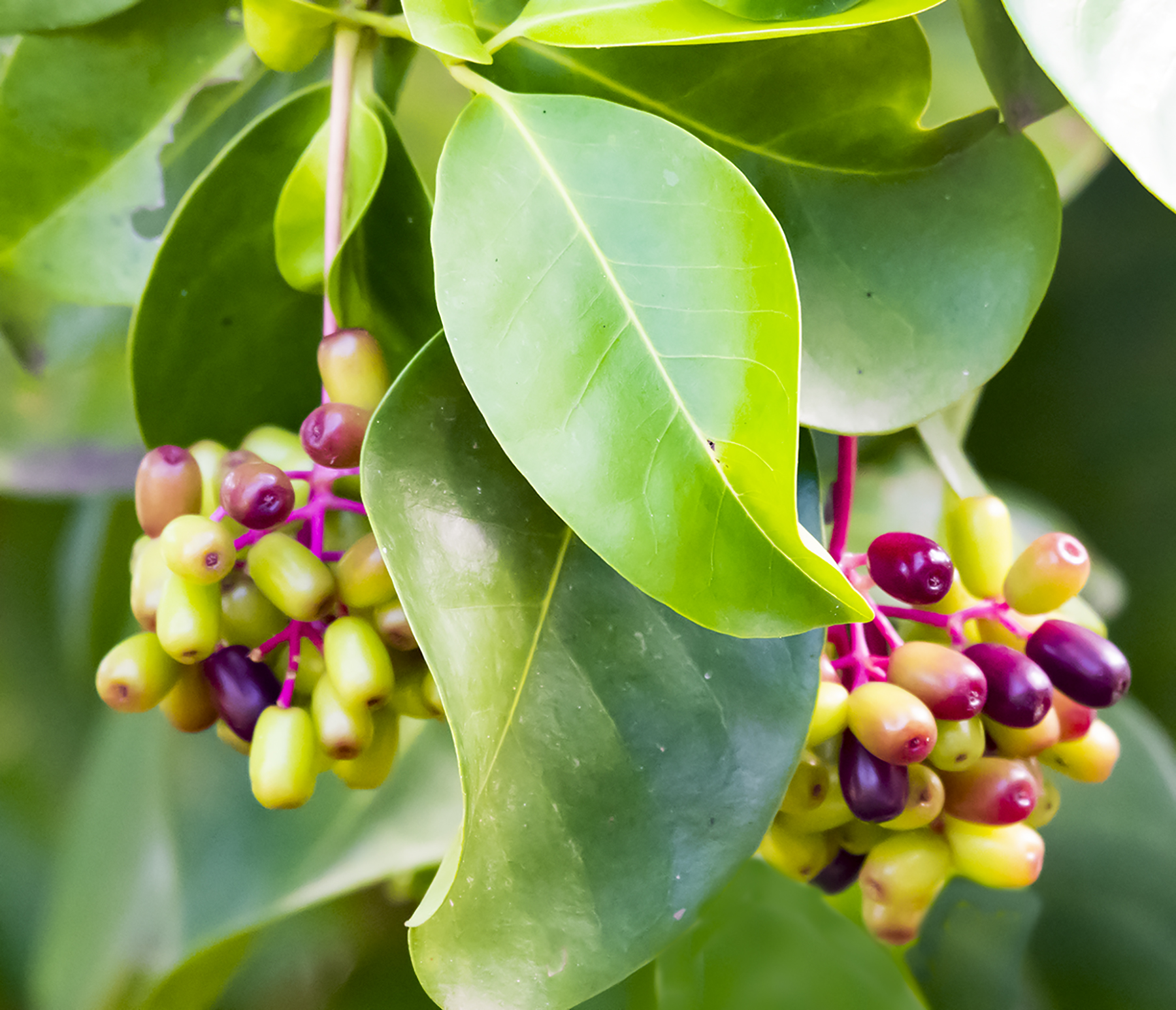
And when they are fully ripe, the fruits are very dark purple.
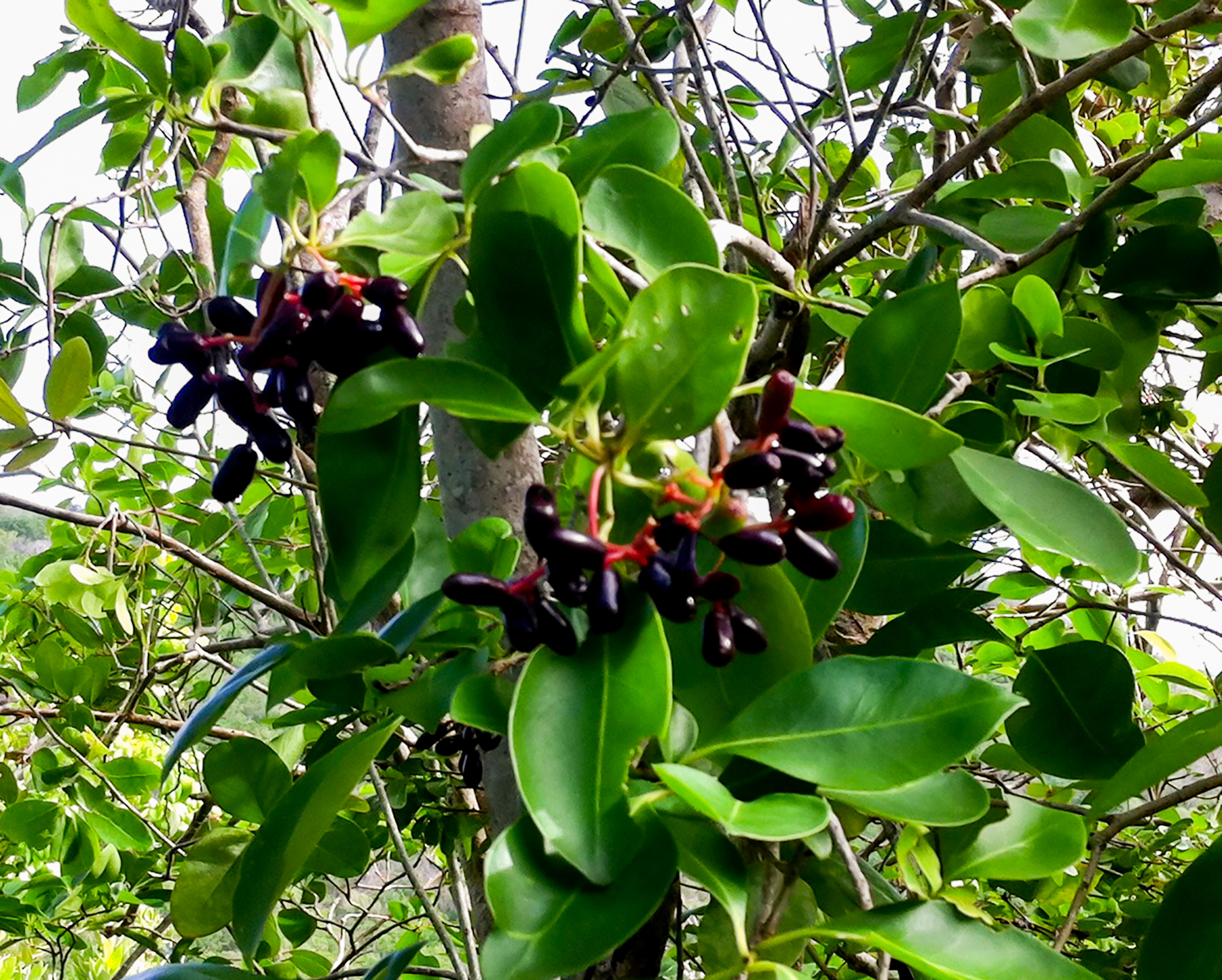
One interesting characteristic of the Black Mampoo trees is that their leaves tend to have strange growths on them, like little dark balls. These growths are called galls. They are caused by a type of very small wasp in the Cynipid family that has developed a parasitic relationship with this tree. These wasps deposit their eggs on the leaves, which is irritating and stimulates them to grow new defensive tissue, which then forms the round, brown galls that serve to surround and protect the wasp eggs. When the eggs hatch, the larvae eat the tissue inside the galls until they are fully grown, and then exit out of tiny holes in the galls.
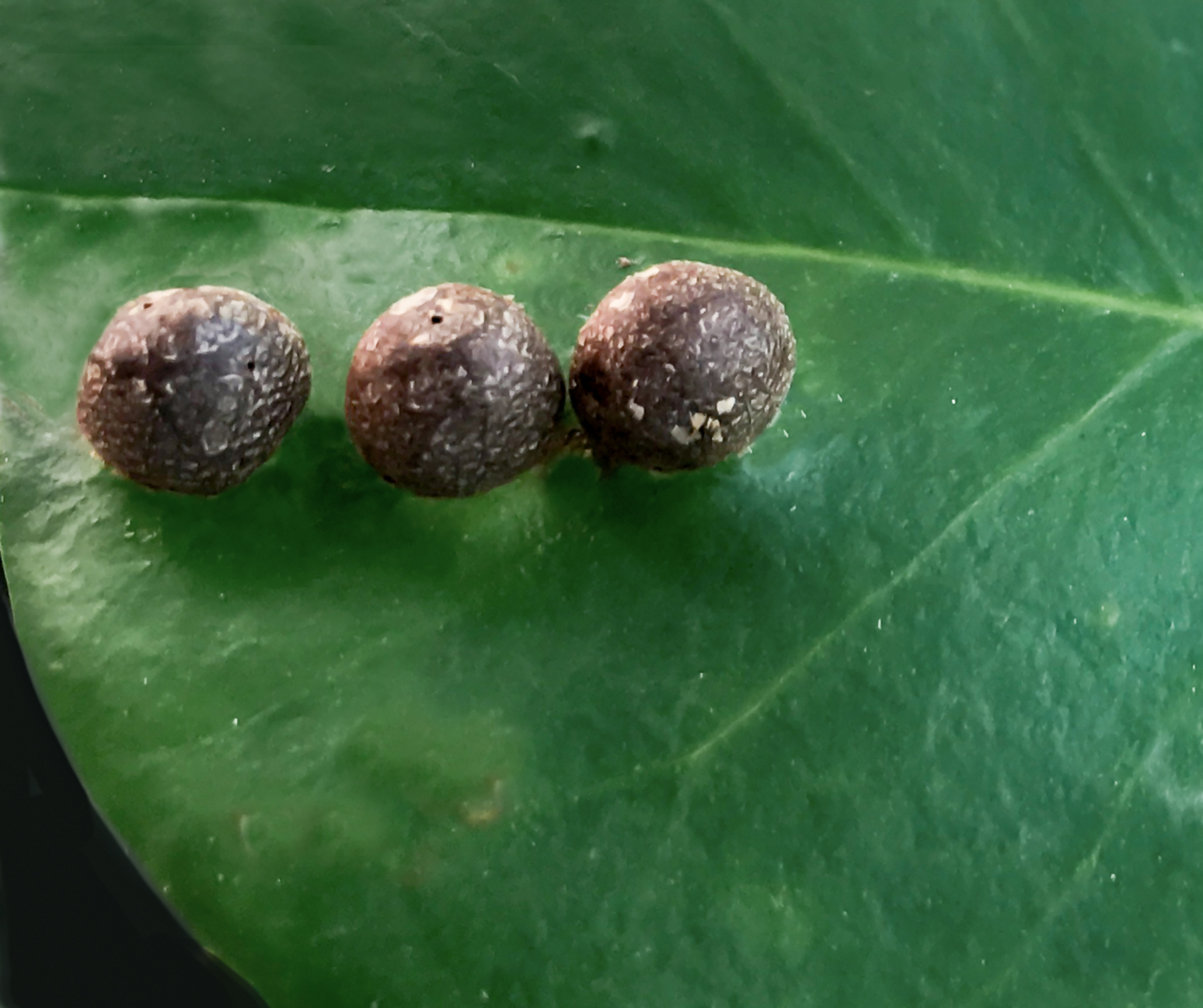
Although these galls look unpleasant, they don’t seem to do much damage to the trees. Still, growing the galls uses up some of the trees’ energy without any obvious benefit. That sounds annoying, ‘galling’, in fact.
Just so you know, there is another, very different native Virgin Islands tree that is also called ‘mampoo’ – the Water Mampoo. These trees are much larger and quite dramatic, with thick exposed roots, pale ghostly bark, and several spongy, plump trunks that spread out quickly from the base. They are found in drier forest areas, and their absorbent trunks allow them to store water, which helps them survive in times of drought.
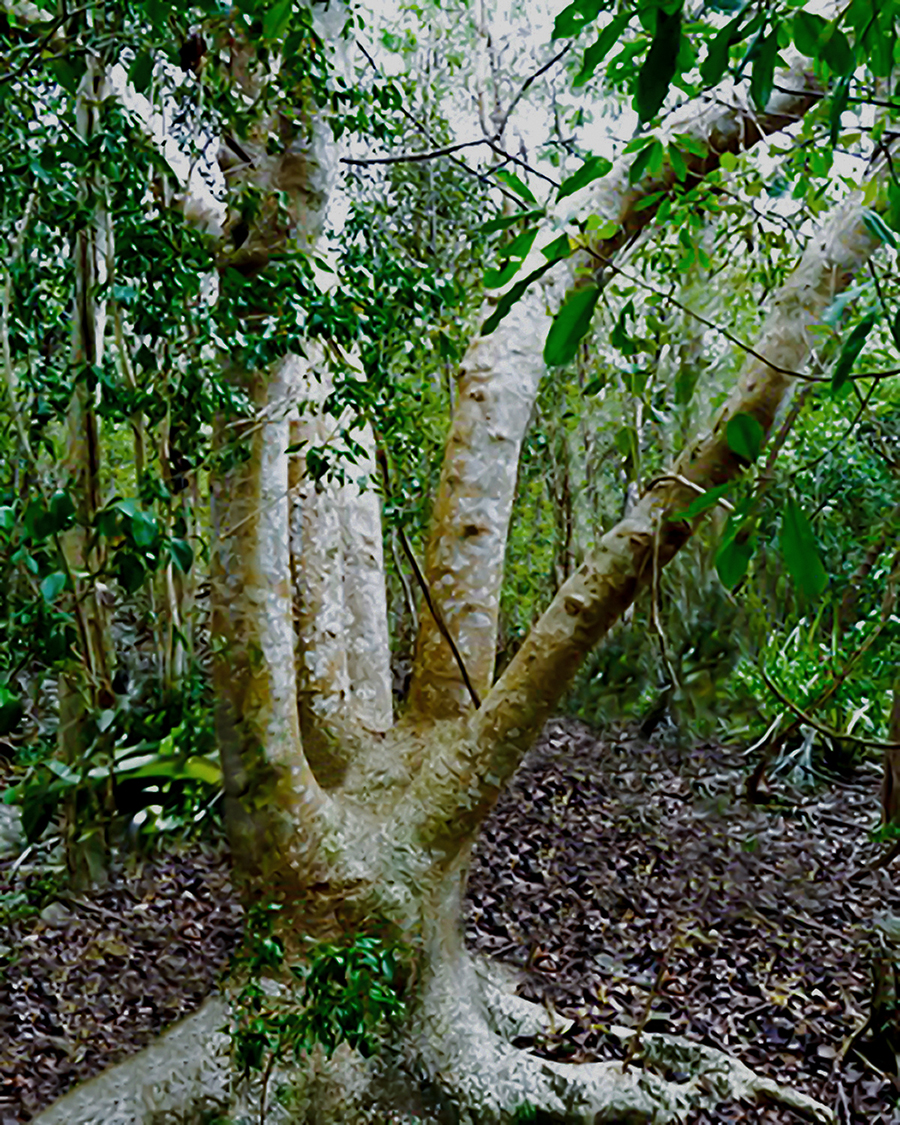
The Water Mampoo leaves are more rounded and (unlike the Black Mampoo) there are male and female forms. The female ones produce clusters of small, sticky fruits.
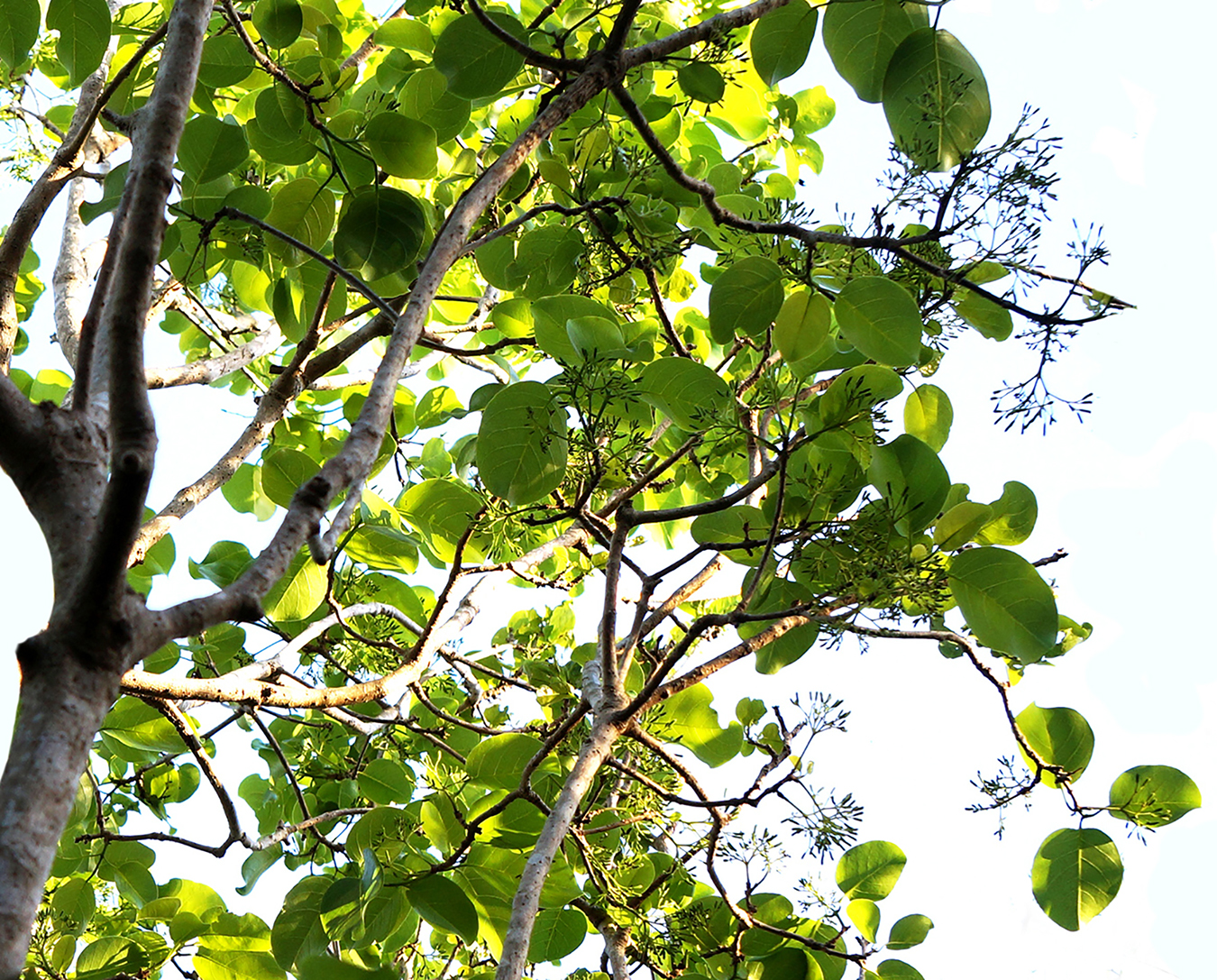
I noticed that these two types of trees don’t seem to have a lot in common, so I wondered why they are both called ‘mampoo’.
There is an alternative spelling in some places – ‘mapou’- particularly in the islands colonized by the French. The Black Mampoo (Latin name Guapira fragrans) is called ‘mapou blanc’ in St. Lucia, and the Water Mampoo (Pisonia subcordata) is called ‘mapou gris’. Blanc means white in French and gris means gray. But ‘mapou’ is not a French word that can be translated.
One source from St. Lucia identifies ‘mapou’ as an Amerindian word, another from Haiti suggests it comes from Africa.
Possibly ‘mapou’ or ‘mampoo’ became used around the Caribbean to refer to certain trees with historical and cultural significance that is not adequately captured in scientific Latin names or other more recent classifications.
________
Gail Karlsson is an environmental lawyer, writer, and photographer. She is the author of two books about the Virgin Islands – The Wild Life in an Island House, and the guidebook Learning About Trees and Plants – A Project of the Unitarian Universalist Fellowship of St. John. She has also recently published A Birds’ Guide to The Battery and New York Harbor. Follow her on Instagram @gailkarlsson and gvkarlsson.blogspot.com.


